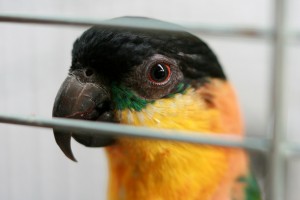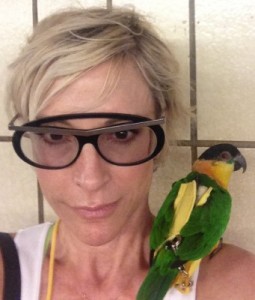Category Archives: Fun/Personal Story/Speculative
Reptile Facts: My Turtle Tale
 WHAT KIDS DON’T KNOW ABOUT REPTILE FACTS
WHAT KIDS DON’T KNOW ABOUT REPTILE FACTS
One September, when I was in third grade, I found a turtle in my back yard, with whom I fell in love instantly. I’d found a huge treasure. Technically, I didn’t even know enough to tell if my turtle was a he or a she, but I decided this amazing and beautiful being was too perfect to be a boy, so I named my turtle, “Teresa”. Her top shell was perfectly arched and form-fitted to my eight-year-old hand. Her head and forearms had yellow-orange spots in precise formation. Teresa’s underbelly shell was smooth and flat. She looked festive and flawless. I decided “finders-keepers”, and my parents were OK with the idea. They assumed my fascination would fade in a week or so.
 What Do WILD Turtles Eat?
What Do WILD Turtles Eat?
When asked, “What do wild turtles eat?“, a neighbor told me that box turtles would eat garden food like fresh tomatoes, lettuce and beans. They also feed on flies, worms, butterflies, and mine enjoyed raw hamburger. My mom found a decent-sized box from the grocery to keep Teresa in. She filled the bottom with grass and leaves and gave me a tin-foil potpie dish for her water.
I loved Teresa. I would dash home from school, sit with her on the back porch and tell her about my day. I’d let her out of the cardboard produce box to roam a bit in the cut grass, and I drew turtle pics of her to hang in my room. Teresa, the Common Box Turtle, was absolutely one of the most fabulous creatures I had ever seen.
Unlike my dog, however, Teresa was a wild animal, and as October drew near, I knew she couldn’t live with me forever. She needed to prepare for winter and be in nature. One late afternoon in October my mother and I let Teresa the Turtle go free in our back yard. My heart broke as I sat on the back step and watched her scoot off toward the trees behind our house. I cried but I knew it was best for her.
 Today, turtles are still sacred animals for me. They are persistent, steadfast survivors. They are deliberate and focused. Turtles remind me to slow down in a hurried society. They inspire me to never give up on my goals, but tell me that it is also okay to “hibernate” and take a break till the next season if necessary.
Today, turtles are still sacred animals for me. They are persistent, steadfast survivors. They are deliberate and focused. Turtles remind me to slow down in a hurried society. They inspire me to never give up on my goals, but tell me that it is also okay to “hibernate” and take a break till the next season if necessary.
Native American Turtle Creation Legends
Many Native American creation stories are based on turtles and their capabilities to form the earth in such a way as to sustain human life. No wonder I appreciate turtles so much! Whether they are gliding around reefs in the oceans or crawling across a field toward a cluster of shady trees, turtles and tortoises work to keep nature in balance and share peace and beauty with all other living things.
The Iroquois Legend Of Creation
 Paige Adams Strickland, our Adoptions Editor, is the recently published author of, Akin to the Truth: A Memoir of Adoption and Identity. She is a Spanish teacher in Cincinnati, Ohio and is married with two daughters and a son-in-law. She has owned both cats and dogs but currently has four cats. Her book blog is www.akintothetruth.squarespace.com, and she welcomes visits and comments there. Her book is available on iPad, Kindle and as a print version at: https://itunes.apple.com/us/book/akin-to-the-truth/id711164304?ls=1
Paige Adams Strickland, our Adoptions Editor, is the recently published author of, Akin to the Truth: A Memoir of Adoption and Identity. She is a Spanish teacher in Cincinnati, Ohio and is married with two daughters and a son-in-law. She has owned both cats and dogs but currently has four cats. Her book blog is www.akintothetruth.squarespace.com, and she welcomes visits and comments there. Her book is available on iPad, Kindle and as a print version at: https://itunes.apple.com/us/book/akin-to-the-truth/id711164304?ls=1
or: Akin to the Truth: A Memoir of Adoption and Identityat Amazon.
When Your Cat Wants A Pet
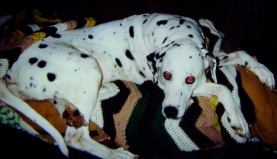 Many years ago I fell in love with a cat at our local animal shelter. He was a rescue who was very affectionate and very different. With his long face and light coloring, he was more than just the typical mixed breed commonly found in shelters, the cat was stunning, and many who met him for the first time couldn‘t help but say, “What an unusual face!” We picked the name Sekhemkare for him, due to his somewhat Egyptian look, and he came home to discover he had a new animal sibling, an aging Dalmation named Deanna, who wasn’t altogether certain what to do with a feline inside of the house. He was young and full of energy, she was tolerant and occasionally interactive, but mostly they ignored each other and after many years of this situation, Deanna passed away, leaving a large hole in our hearts and making Sekhem the only large animal in our household.
Many years ago I fell in love with a cat at our local animal shelter. He was a rescue who was very affectionate and very different. With his long face and light coloring, he was more than just the typical mixed breed commonly found in shelters, the cat was stunning, and many who met him for the first time couldn‘t help but say, “What an unusual face!” We picked the name Sekhemkare for him, due to his somewhat Egyptian look, and he came home to discover he had a new animal sibling, an aging Dalmation named Deanna, who wasn’t altogether certain what to do with a feline inside of the house. He was young and full of energy, she was tolerant and occasionally interactive, but mostly they ignored each other and after many years of this situation, Deanna passed away, leaving a large hole in our hearts and making Sekhem the only large animal in our household.
As humans, we are typically devastated at the loss of a pet and we all know that we deal with loss in many ways. Some people rush out and fill the empty cage, tank, or dog bed right away because they can’t stand the silence, while others take their time to let the wounds heal. I was one of the latter, but I knew that there were other animals in the house that had been used to having Deanna around. I gave the cat, rats, and even the fish lots of extra attention, and used that extra love to help ease my own pain. I was certain that it was enough because other than occasionally looking a little lonely, everyone seemed content.
We suspect that Sekhemkare is a victim of animal abuse. The shelter knew little about him, other than that he had probably been abandoned. Cats are skittish at times, but he was even more so, jumping at the slightest sounds, and being terrorized by brooms, moving or motionless. He was petrified by storms and hated the outside world in general. The first few raindrops on the roof or a gentle gust of wind against the building were guaranteed to send him crying out in mental agony from his hiding place under the bathtub, where he would remain for days. All of these things didn’t make going to the vet very easy.
But when the time comes, you’ve got to get that annual appointment in, so we would get out the crate and soldier in with our cat. For several years, though Sekhem was healthy, something seemed off. No one could place it, but he just wasn’t quite himself. There was no illness, no physical symptom of any kind, but his anxieties were getting worse, he would disappear under the bathtub for weeks and he was beginning to get raw patches on his back. We were all worried. He was taken to NC State’s Veterinary School where he tested positive for allergies and we were given the appropriate shots to administer to prevent allergic reactions, but he was not recovering. Eventually, I discovered the reason for the sores: Sekhem was ripping out his own fur.
Could my cat really want a dog?
This, of course, had to stop. But how? Desperate for answers, I took our cat to our regular vet, to discuss the use of anti anxiety medications. We were put in a room and I let Sekhem wander, trying not to pace and fret the way he was. There had to be answers and we would find them. I was certain. I calmed myself and then suddenly realized that there were no sounds coming from my cat. My head snapped in his direction and a wave of shock hit me as I took in the unusual sight of my feline friend, calm and collected in a strange environment, staring out of the floor-to-ceiling window, seemingly entertained by the outside world. Behind the glass was a family. And their dog.
Could my cat really want a dog? He hadn’t acted all that interested in Deanna, they weren’t into snuggling or sharing beds or anything like that, and mostly he stayed out of her reach. Testing my theory, the next time my landlady asked me to go next door and check on her dogs, I had them walk home with me for a while. She has a large Black Lab who took to Sekhem right away because he had grown up with a cat in the house. The anxiety attacks didn’t stop, but Sekhemkare did start to look forward to the visits and would come out of hiding if I brought this new friend to visit him. I had won a major victory. Buster the Black Lab began making frequent visits to my house and even spent the night now and then, when no one was home at his place.
Problem solved? Not exactly. There were still some sore spots that needed to be cared for which meant one more visit to the vet, where Sekhem began reaching out of his carrier to touch the dog in line ahead of us. I was politely told that my cat was trying to scratch the dog, to which I smiled and said that he was used to dogs and was probably trying to pet him. “He wants a dog,“ I said. “We used to have one, but she died and he’s been begging us for another one for years.“ As I moved back out of respect for those concerned, curiosity got the best of everyone in the reception area. One of the staff had her dog there with her for the day, so she brought him out to test my theory and sure enough, Sekhem began to rub at the bars of his carrier, reach out to pet the dog and purr loud enough for half the room to hear. From that moment on I knew that I had to spend less time thinking of my own sadness and more time thinking about the cat’s feelings. There was no denying it. Our cat wanted a dog and less than a year later he had one.
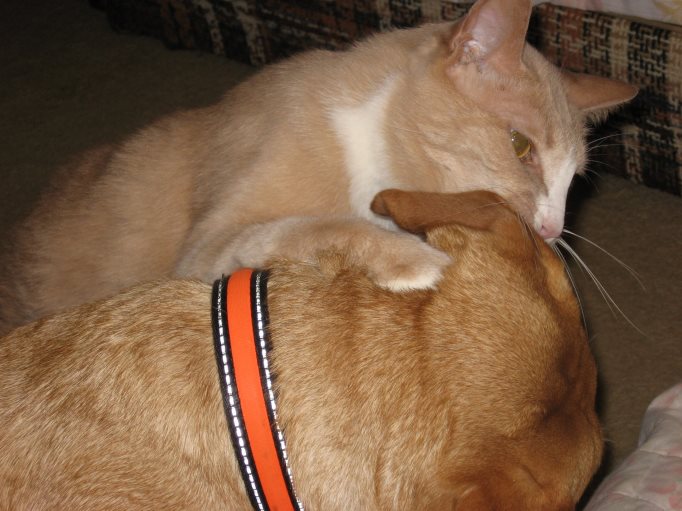 The day we brought home our Corgi-Lab mix from a local animal rescue organization, the roles were suddenly reversed. Sekhemkare was in his early teens and Sahara, the new dog, was only three or four. This time it was Sahara who was recovering from animal abuse, leaving a horrible situation for a new start. She was skittish, uncertain and afraid, and the cat could recognize that. He could also recognize that she wanted to run and play with him, which were not the qualities he had become used to in a dog. The situation was a little touchy at first, but once Sekhem realized that Sahara was here to stay, he began hovering near the entrances to whatever room she was in and slowly, over the period of a few months, they learned each other’s languages. Now, when Sahara goes outside, Sekhem waits faithfully at the door for her to return, braving the dangerous world to keep her in his view, and there is a daily improvisational play time that usually starts with the gentle swat of a tail or a slobbery lick on the head. Best of all, there haven’t been any sores on his skin in the year and a half since we brought Sahara home.
The day we brought home our Corgi-Lab mix from a local animal rescue organization, the roles were suddenly reversed. Sekhemkare was in his early teens and Sahara, the new dog, was only three or four. This time it was Sahara who was recovering from animal abuse, leaving a horrible situation for a new start. She was skittish, uncertain and afraid, and the cat could recognize that. He could also recognize that she wanted to run and play with him, which were not the qualities he had become used to in a dog. The situation was a little touchy at first, but once Sekhem realized that Sahara was here to stay, he began hovering near the entrances to whatever room she was in and slowly, over the period of a few months, they learned each other’s languages. Now, when Sahara goes outside, Sekhem waits faithfully at the door for her to return, braving the dangerous world to keep her in his view, and there is a daily improvisational play time that usually starts with the gentle swat of a tail or a slobbery lick on the head. Best of all, there haven’t been any sores on his skin in the year and a half since we brought Sahara home.
The moral of this story? Always be willing to listen to your pets. You might not speak the same languages, but like dogs and cats, we can eventually work out the signals. We now have a happy, healthy cat who has completely given up chewing on his skin and hiding under bathtubs, and all it took to get there was listening to that childlike voice: “Mom? Dad? Can I PLEASE have a dog?”
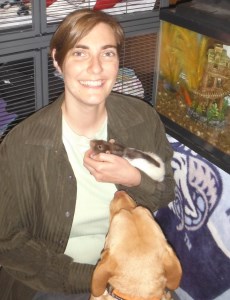 Mirrani Houpe has had rats since she took home her first little boy once they both completed the second grade. Since that time she has purchased, rescued and bred many kinds of rats, from many backgrounds. She may not be a vet, psychology major, or scientist, but her babies have her very well trained when it comes to how to care for them. She is constantly working with her family’s veterinarian to come up with new and innovative ways to love and care for the most often misunderstood rodent in the pet world. You can e-mail her at mirrani@earthlink.net.
Mirrani Houpe has had rats since she took home her first little boy once they both completed the second grade. Since that time she has purchased, rescued and bred many kinds of rats, from many backgrounds. She may not be a vet, psychology major, or scientist, but her babies have her very well trained when it comes to how to care for them. She is constantly working with her family’s veterinarian to come up with new and innovative ways to love and care for the most often misunderstood rodent in the pet world. You can e-mail her at mirrani@earthlink.net.
Funny Videos: Dogs, Cats, Other Animals Attack!
A Valentine Message from Your Pet Space
Funny Videos: Super Pets For The Superbowl
We hope you enjoy these cute and funny videos of pets we watched INSTEAD of the Superbowl!
Did You Miss Puppy Bowl 2014? Watch It Here!
It’s Funny Friday!
Parrot Persona: SATURDAY GUEST BLOG
Living with a parrot is like having a boyfriend all your friends hate. They look at your relationship and can’t understand what you see in him, but it all just reinforces an “us against the world” bond between you.
My eight year old caique, who I have had since he was a few months old, has recently learned how to open the door to his cage, all the better to stalk and attack my seventeen year old son, Django. Not only does he want to kill Django, but just about anyone who comes into our apartment. I have been called back to the apartment: “Luciano’s out!!” to find a member of my family standing on the couch with this small parrot pacing, pigeon toed underneath, just waiting for the opportunity to shred some skin. There have been times I wasn’t fast enough, and he has swung from hair, bitten hands and drawn blood from toes.
Not that I am spared from the wrath of Luciano. If someone he doesn’t like (basically everyone) comes into the room when he is on my shoulder, he will go for my face. What I found stops the attack is cooing “Oh, Luciano” and kissing his beak. It takes courage, but it never fails to stop his aggression. His yellow eyes dilate and go to half mast and he allows me to scratch his fat neck.
So what is the flip side of living with this little dinosaur? He loves affection from me, will go to the bathroom over the sink on command and will actually say “go potty” when he needs to. He has perfected my laugh and seems to know the rhythm of a joke and will laugh at it, even if no one else does.
He is my husband’s best audience.
Living with Luciano is a huge lesson in living mindfully. I watch his behavior and experiment with what makes life good for him. Caiques live in flocks, and call to each other to let their presence be known. During the day, I answer his squawks with one of my own to let him know where I am in the apartment, and he is content. Or I do chores with him on my shoulder.
When I got Luciano, we lived on an acre in New Mexico, and he loved being outside gardening with me. If he saw a hawk, he would climb into my shirt until the danger passed, and eyed the quail with their broods of babies with interest. Living in a New York City apartment made Luciano unhappy. It took months of desperately trying to solve it in various ways until I finally came up with the right answer for him.
I found flight suits for birds online; little coats that Velcro on and
are attached to lanyards. They act as diapers and leashes and as the weather warmed, Luciano and I hit the streets, taking the dogs for walks, having a glass of wine at outdoor cafés, riding the subways to Bloomingdale’s.
Trouble came in the winter. At first I left my little parrot at home, worried naturally about the effect of the cold on my tropical bird. My vet suggested a carrier, but that was just too bulky and not really warm enough. One day as I was taking the dogs out, I put him inside a tight fitting down vest and topped it with my coat. I told him “Lucie, if you try to come out, this will never work,” and he never did. He loves traveling in my vest, and I love having him there. We have been to places in the city together that probably would not appreciate having a bird, but it’s our secret as long as my vest is on. The only indication he is there is his heartbeat next to mine and the odd time he will join me in a laugh when I am talking to someone.
Let me tell you, my vest gets some very confused looks.
Nana Visitor has been unable to live without animal companionship since she was a little girl. Although bitter about it at the time, now that home is NYC, she is grateful to her husband Matthew for discouraging the adoption of the dwarf bull in New Mexico.
It’s Funny Friday!
It’s time once again for a little something for our Science Fiction visitors!
May the Fur Be With You! 😉
How Cheetah Cheated Fate
Paige Adams Strickland is the author of, Akin to the Truth: A Memoir of Adoption and Identity. She is a Spanish teacher in Cincinnati, Ohio and is married with two daughters and a son-in-law. She has owned both cats and dogs but currently has four cats. Her book blog is www.akintothetruth.squarespace.com, and she welcomes visits and comments there. Her book is available on iPad, Kindle and as a print version at: https://itunes.apple.com/us/book/akin-to-the-truth/id711164304?ls=1 or:

